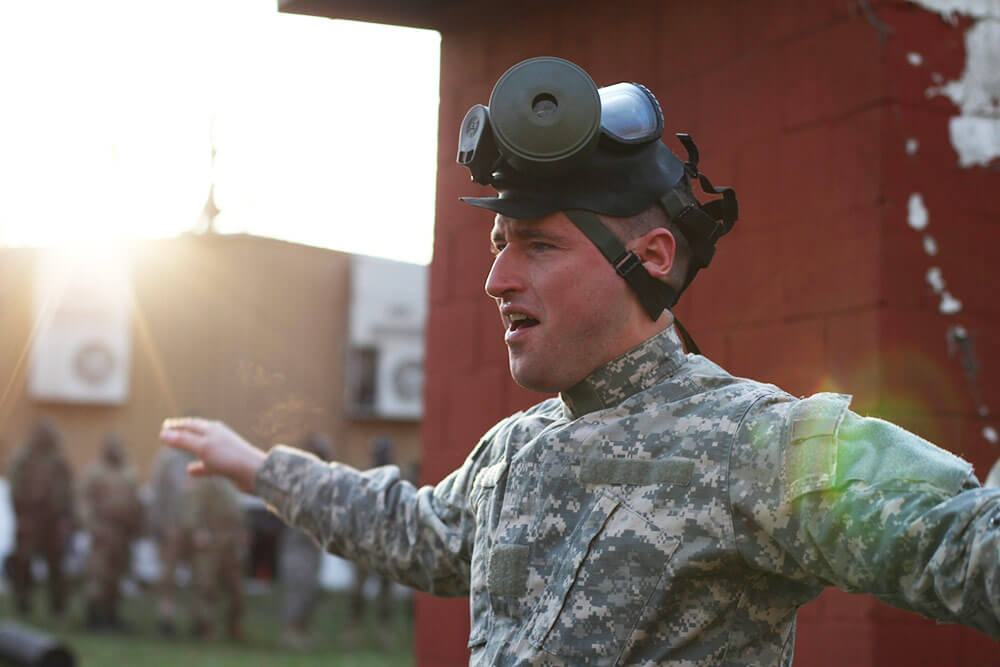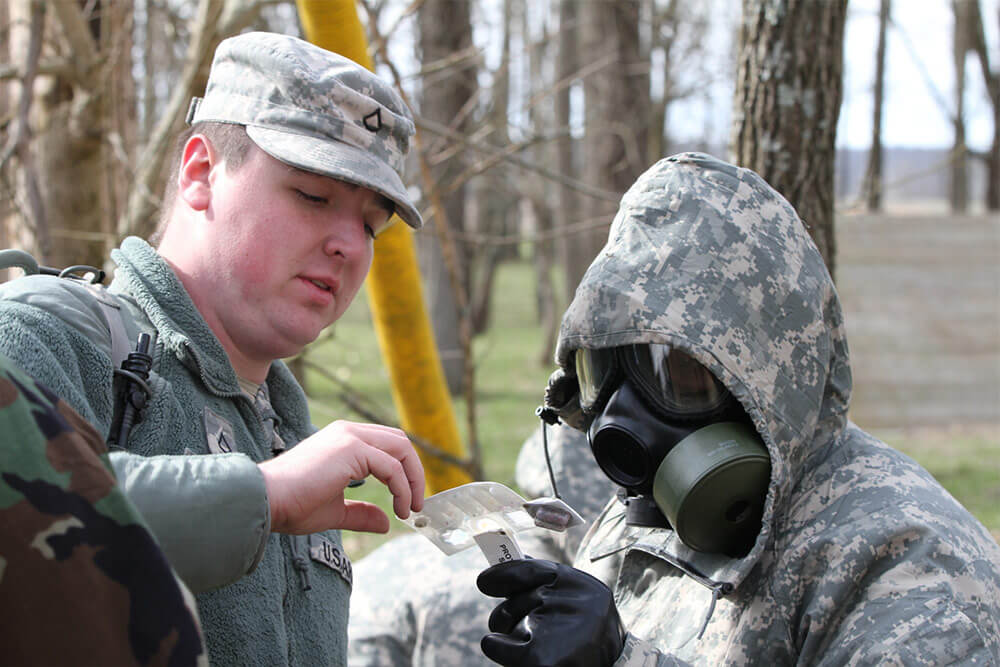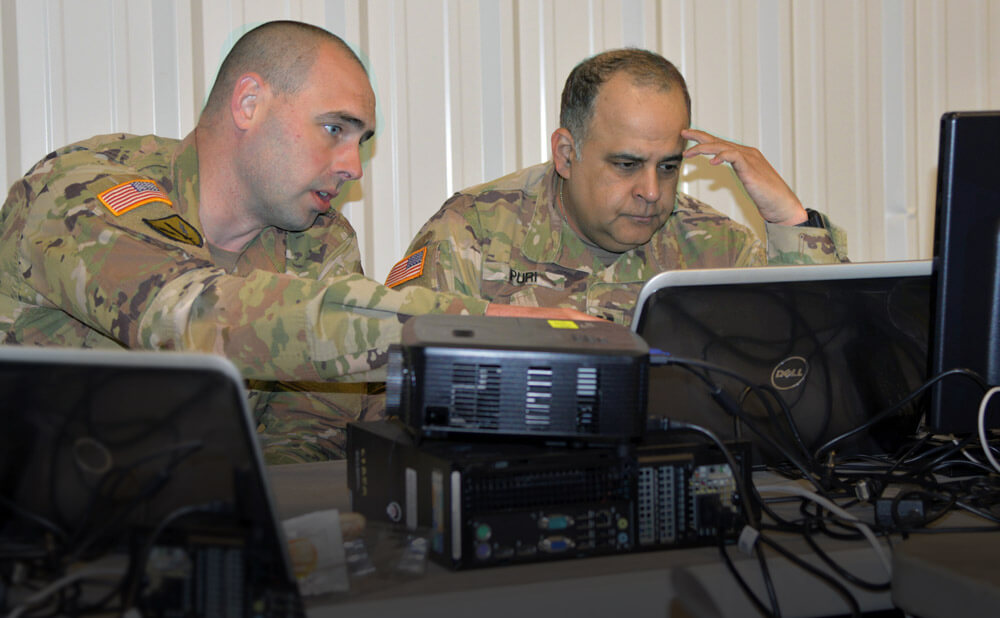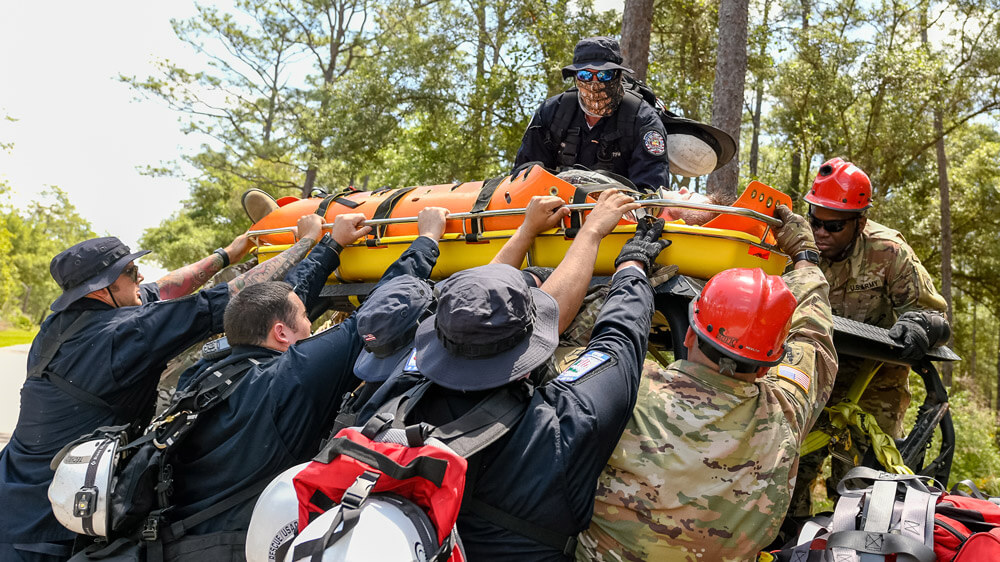In the age of unconventional warfare, the risk of chemical, biological, radiological and nuclear (CBRN) attacks brings a greater need for a proactive approach. Weapons of this kind can be unseen killers.
In response to such threats, troops have many pieces of protective gear – masks, suits, gloves and boots – that must be worn and taken care of properly to defend themselves.
“If you do not seal your suit properly, then you are dead. It sounds harsh, but that is the reality of this,” said SPC Shantae Buchanan, an instructor with the Indiana Army National Guard’s 438th Chemical Company. “People don’t always take this training seriously because they’ve never had to deal with this stuff seriously. Being current with this training means ensuring your survival in the event of a nuclear or chemical incident.”
To maintain currency, about 60 Soldiers from the Indiana Army National Guard participated in a three-day event in early April. The information they received and experience they gained will help them train others, which is crucial because one missed step in the preparation process can be devastating.
“Our state adjutant general realized that the need for CBRN training was severely lacking amongst our Guard [members],” said MAJ Ryan Core, the operations officer for Indiana’s emergency response force package. “These skills are ones that are in the basic Warrior Task list that they learn, but soon forget from lack of use.”
The training consisted of crawl-walk-run phases, separating training intensity as the days went on. The first day included briefs and equipment familiarization.
“For many of them, this is their first time seeing this type of equipment and handling it,” MAJ Core said. “We are able to use ordinary household chemicals to fool the detectors on the equipment to show how our machines will act in the event of an incident. The plan is that after they complete their training, they will then be able to go back to their units and train their own.”

Indiana Army National Guard photo by SGT Alejandro Smith-Antuna
The second day involved outdoor field training in round-robin scenarios. Each station consistently reinforced the need for precaution and safety. The Mission Oriented Protective Posture (MOPP) is safety gear used by military personnel in toxic environments.
Accordingly, there are different MOPP levels, ranging from 0-4, that correspond with increasing levels of protection. The levels begin with the equipment by your side, then increase to wearing the overgarment at Level 1 and eventually to wearing all protective gear – including a mask, gloves and boot covers – at Level 4.
By day 3, the Soldiers were using what they learned in the first two days, including information on decontamination, identifying and reporting CBRN attacks, and setting up gas chamber training.
“[This training] gives us that next hands-on level of learning, where we saw it in the classroom [and] now we get to see it in person and deepen our understanding,” said 2LT Daniel Reynolds, a maintenance platoon leader with the 319th Forward Support Company. “This way, when we are instructing our team, platoon or battalion, we have more subject matter experts to give the best training.”
By SGT Alejandro Smith-Antuna, Indiana National Guard



